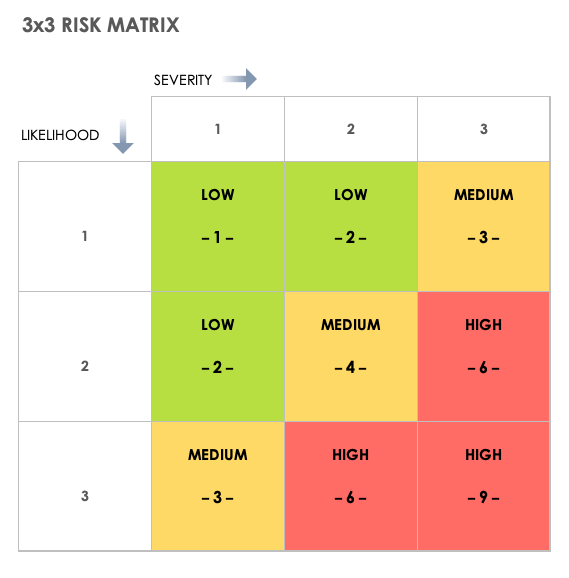
The X-axis should be labeled appropriately to include the scale of values. Any risk matrix should reflect these elements: Probability (or Likelihood) on X-Axis

Risk impact refers to the level of disturbance to the project if a risk occurs. Risk probability is the likelihood of occurrence or what are the chances of that risk happening within the time frame of the project.

After the perform qualitative risk analysis process, each risk’s probability and impact are documented in the risk matrix tool. The risk matrix tool fits within the overall risk management knowledge area, specifically the early risk processes. Project managers should complete a risk matrix as part of the perform qualitative risk analysis process. The risk matrix’s visual depiction conveys the project’s risks, so the project manager and team are better positioned to determine risk mitigation and response strategies.

Risk Matrix advantages and disadvantages.The term “risk matrix” or “risk matrix PMP” will be used for simplicity.

#Pmp risk probability and impact matrix professional#
Students should know PMI’s Project Management Professional (PMP)® exam uses the term “probability and impact matrix.” However, some project managers informally call it the: risk control matrix, risk matrix, PMP risk matrix, risk matrix PMP, or probability and impact matrix PMP. Students preparing for Project Management Institute (PMI) exams and project managers refining their skills should know what a risk matrix is and how it benefits the project. The risk matrix tool communicates the overall project risks and supplies information, increasing the effectiveness of a risk response. Within the perform qualitative risk assessment process, each identified risk’s probability and impact score is mapped within the risk matrix tool to help the Project Manager and team better understand how certain risks may impact the project. Posted on AugDecemHow to Use a Risk Matrix in Project Management


 0 kommentar(er)
0 kommentar(er)
